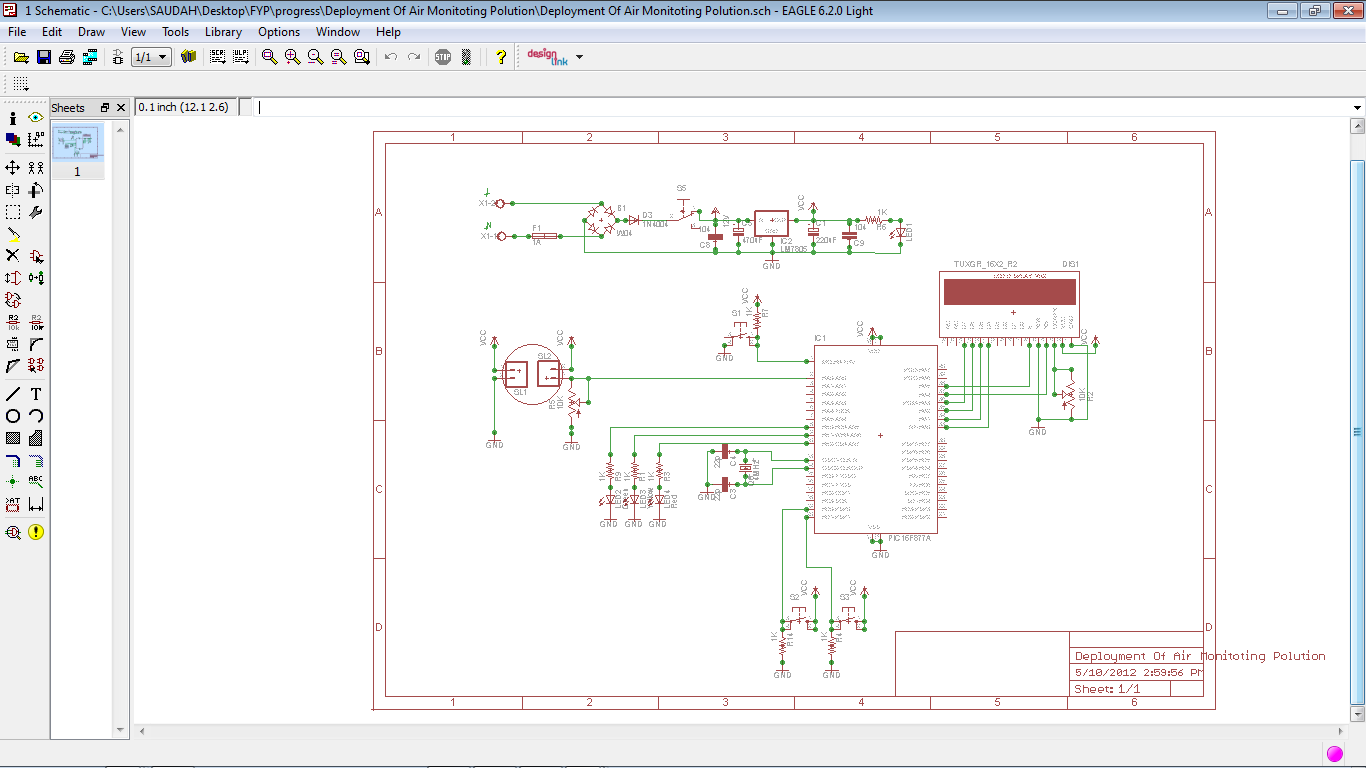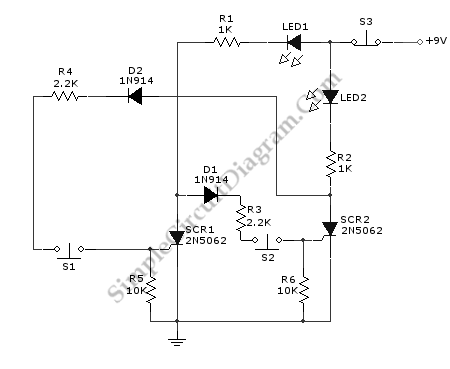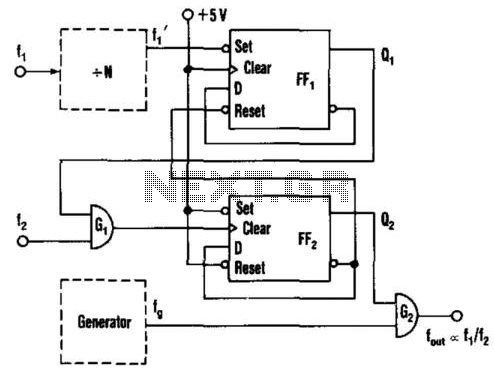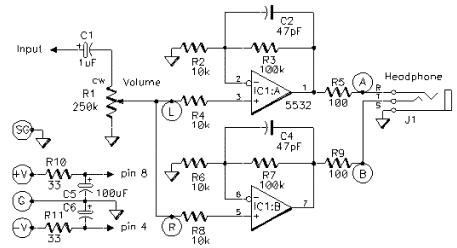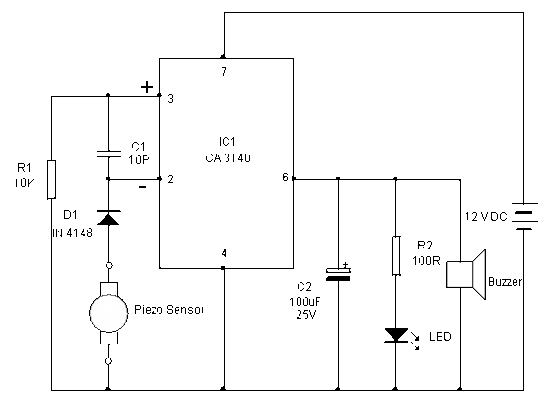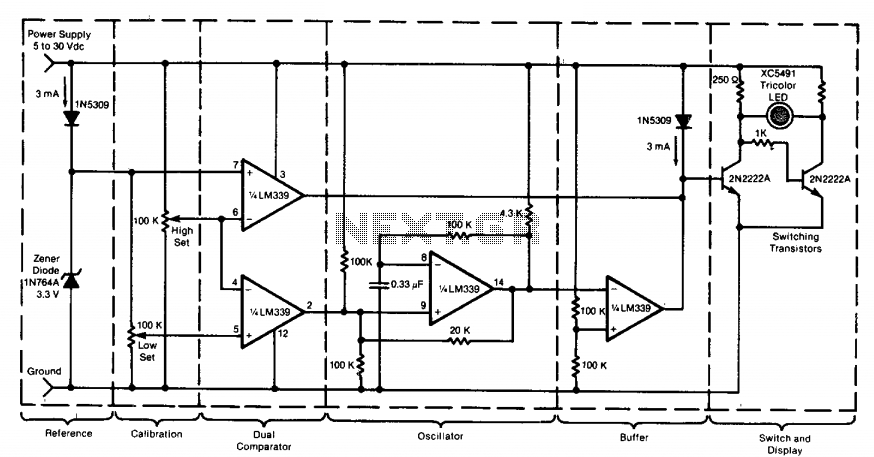
monitor splitter
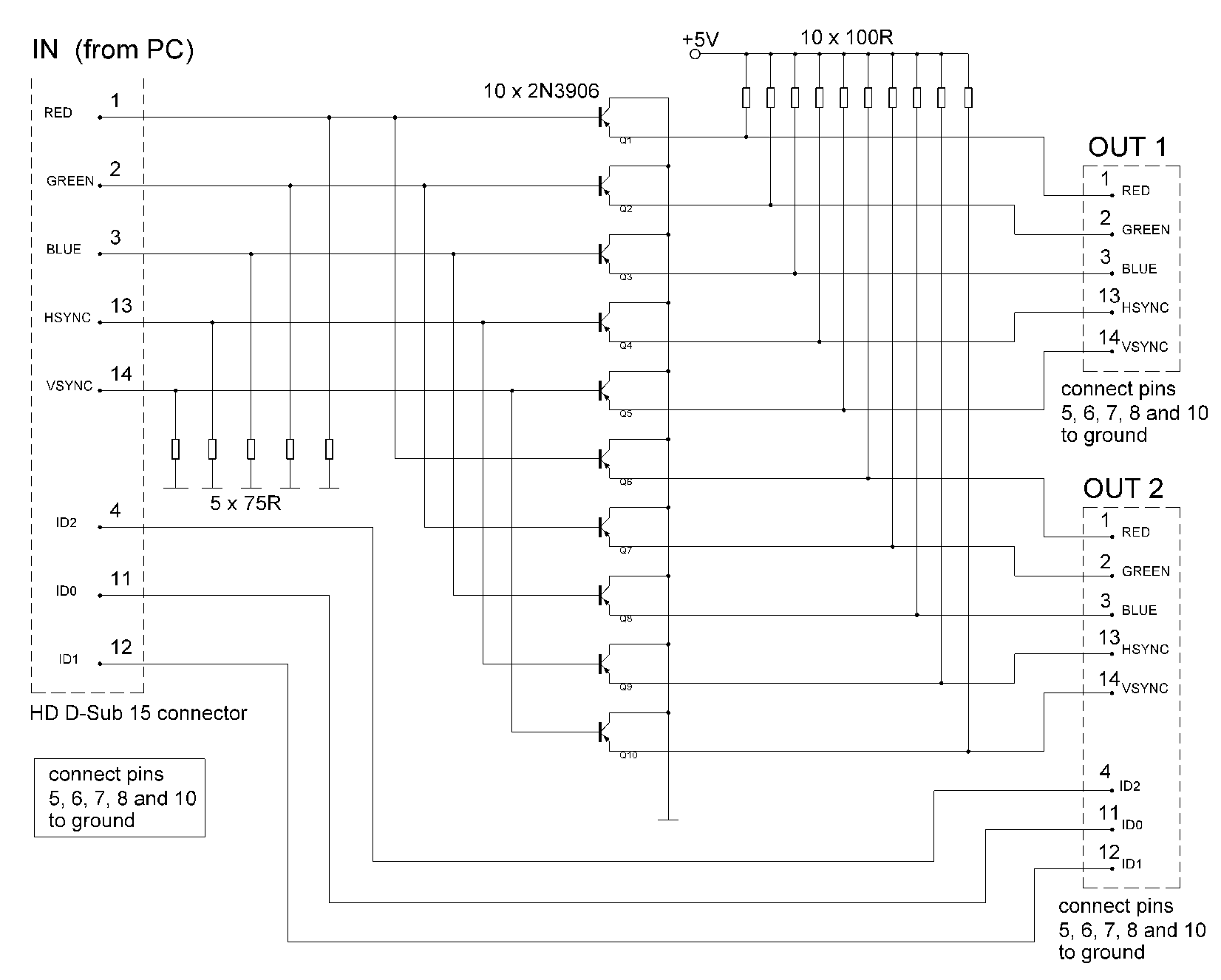
The signal sources in the analog output stage of the PC SVGA card are designed to present the correct impedance of 75 ohms on each line, utilizing five resistors. The input impedances of the transistors are sufficiently high to avoid adding any significant load. The transistors used in the ten emitter-follower configuration should have high speed characteristics. Although the 2N3906 is not the optimal choice, it is cost-effective and serves its purpose adequately. Connections should be kept as short and direct as possible. Since monitor signals are radio frequency (RF), the splitter must be housed in a metal case that is connected to the circuit ground. It should be powered by a well-filtered 5 volts supply capable of delivering 600 mA. There is a DC component present in the output signals; however, this should not pose an issue. The splitter has been tested successfully at resolutions of 800x600 and 1024x768 on 15-inch monitors. For higher pixel rates, it may be beneficial to consider faster transistors, although this has not been tested. High gain is advantageous as it increases the input resistance of the emitter-followers.
The analog output stage of a PC SVGA card is a critical component that ensures the accurate transmission of video signals to the display. The design requires careful attention to impedance matching, with a target of 75 ohms for each signal line. This is achieved through the use of five resistors, which help to minimize signal reflections and maintain signal integrity over varying distances.
The choice of transistors is crucial in the emitter-follower configuration, where the goal is to achieve high speed and low output impedance. While the 2N3906 transistor is mentioned as a suitable option, it is essential to evaluate other transistors that may offer improved performance in terms of speed and bandwidth, particularly for applications requiring higher pixel rates. The layout of the circuit should prioritize short and direct connections to reduce parasitic capacitance and inductance, which can degrade signal quality, especially at RF frequencies.
To ensure optimal performance, the splitter housing should be constructed from metal, providing shielding against electromagnetic interference. This metal case must be grounded to the circuit ground to further enhance signal integrity. The power supply for the circuit should be well-filtered to maintain a stable voltage of 5 volts, with a current capacity of at least 600 mA to support the operation of the transistors and any additional circuitry.
The presence of a DC component in the output signals is acknowledged, but it is considered manageable within the context of the design. The splitter's performance has been validated at common resolutions of 800x600 and 1024x768 on standard 15-inch monitors, indicating that the design meets the requirements for typical use cases. For applications requiring higher resolutions or pixel rates, further testing with faster transistors may be warranted to ensure that the circuit can handle the increased demands without compromising performance. The high gain characteristics of the emitter-followers contribute positively to the overall design by enhancing input resistance, which is beneficial for driving loads with varying impedance.The signal sources in the analog output stage of the PC SVGA card see the right impedance - 75 ohms on each line (five resistors), and the input impedances of the transistors are so high that they do not make any significant additional load. The transistors that form the ten emitter-followers should be as fast as possible. 2N3906 is not the best p ossible choice, but it does the job and is unusually cheap (for such a versatile component). All connections should be as short and straight as possible. Monitor signals are RF, so the splitter should be put in a metal case which is connected to the circuit ground. It should be supplied with well-filtered 5 volts and some 600 mA. There is some DC component in the ouput signals, but it should not be a problem. The splitter works fine at 800x600 and 1024x768 on 15" monitors. For higher pixel-rates maybe it would be preferable to use faster transistors (haven`t tried). High gain is also a good thing, because it gives emitter-followers higher input resistances. 🔗 External reference
The analog output stage of a PC SVGA card is a critical component that ensures the accurate transmission of video signals to the display. The design requires careful attention to impedance matching, with a target of 75 ohms for each signal line. This is achieved through the use of five resistors, which help to minimize signal reflections and maintain signal integrity over varying distances.
The choice of transistors is crucial in the emitter-follower configuration, where the goal is to achieve high speed and low output impedance. While the 2N3906 transistor is mentioned as a suitable option, it is essential to evaluate other transistors that may offer improved performance in terms of speed and bandwidth, particularly for applications requiring higher pixel rates. The layout of the circuit should prioritize short and direct connections to reduce parasitic capacitance and inductance, which can degrade signal quality, especially at RF frequencies.
To ensure optimal performance, the splitter housing should be constructed from metal, providing shielding against electromagnetic interference. This metal case must be grounded to the circuit ground to further enhance signal integrity. The power supply for the circuit should be well-filtered to maintain a stable voltage of 5 volts, with a current capacity of at least 600 mA to support the operation of the transistors and any additional circuitry.
The presence of a DC component in the output signals is acknowledged, but it is considered manageable within the context of the design. The splitter's performance has been validated at common resolutions of 800x600 and 1024x768 on standard 15-inch monitors, indicating that the design meets the requirements for typical use cases. For applications requiring higher resolutions or pixel rates, further testing with faster transistors may be warranted to ensure that the circuit can handle the increased demands without compromising performance. The high gain characteristics of the emitter-followers contribute positively to the overall design by enhancing input resistance, which is beneficial for driving loads with varying impedance.The signal sources in the analog output stage of the PC SVGA card see the right impedance - 75 ohms on each line (five resistors), and the input impedances of the transistors are so high that they do not make any significant additional load. The transistors that form the ten emitter-followers should be as fast as possible. 2N3906 is not the best p ossible choice, but it does the job and is unusually cheap (for such a versatile component). All connections should be as short and straight as possible. Monitor signals are RF, so the splitter should be put in a metal case which is connected to the circuit ground. It should be supplied with well-filtered 5 volts and some 600 mA. There is some DC component in the ouput signals, but it should not be a problem. The splitter works fine at 800x600 and 1024x768 on 15" monitors. For higher pixel-rates maybe it would be preferable to use faster transistors (haven`t tried). High gain is also a good thing, because it gives emitter-followers higher input resistances. 🔗 External reference
